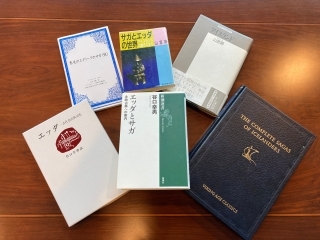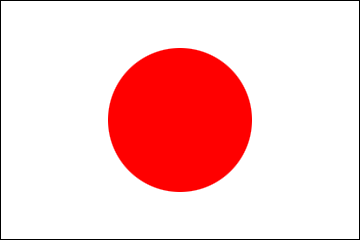From Ambassador (The World of Saga)
2023/6/6

Iceland is a small country with a small population, but it is a country of considerable importance, especially in the world of “classical literature”.
This is because the Icelandic classics, Edda and Saga, which were discovered and introduced in the 17th century, have been widely studied as a legacy of a lost ancient Germanic culture. (In fact, they were apparently long forgotten in Iceland, but fortunately, well-preserved manuscripts on parchment were rediscovered.)
Þór, who appears in Hollywood super hero movies, is one of the characters from Norse mythology portrayed in the Edda, and is the god of thunder. I will write more about Edda and Norse mythology in a separate article.
One I find particularly interesting and would like to introduce to you is the world of Saga. Some of you may have heard of “Vinland Saga”, which was also the subject of a manga in Japan. It is the combined name of two sagas, “Saga of Erik the Red” and “Saga of the Greenlanders”, and tells the story of the discovery and an attempt to immigrate to Greenland, as well as the discovery of a part of the North American continent named Vinland, and the people who later attempted to settle there.
However, there are many different types of sagas, and “Vinland Saga” is only one part of it. Rather, it is “Sagas of the Icelanders”, which tells of the Icelanders in the early days of the settlement, that form the heart of the sagas.
In fact, an economic official I met when I first arrived in Iceland gifted me a five-volume collection of the Icelandic sagas in English (as I mentioned before, Icelanders like to give books as gifts). Having received it, I couldn't resist reading it, starting with the main ones and those I thought were interesting little by little. One that I think is particularly interesting is “Laxdæla saga”, which has romantic elements and a number of characters, each of whom is very interesting in their own ways.
Another story that attracts many fans is "Njáls saga", in which Njál, who was claimed to be a wise man, is finally burnt to death. It is reputed to be of great literary value, but I cannot recommend it highly enough as it has many flavourless parts, like being read through a law casebook, and the entire book is very long.
Unfortunately, I don't think there is a Japanese translation of all of these two, but they are introduced by Mr. Shizuka Yamamuro and Mr. Yukio Taniguchi in their books, so please refer to them if you are interested.
This is because the Icelandic classics, Edda and Saga, which were discovered and introduced in the 17th century, have been widely studied as a legacy of a lost ancient Germanic culture. (In fact, they were apparently long forgotten in Iceland, but fortunately, well-preserved manuscripts on parchment were rediscovered.)
Þór, who appears in Hollywood super hero movies, is one of the characters from Norse mythology portrayed in the Edda, and is the god of thunder. I will write more about Edda and Norse mythology in a separate article.
One I find particularly interesting and would like to introduce to you is the world of Saga. Some of you may have heard of “Vinland Saga”, which was also the subject of a manga in Japan. It is the combined name of two sagas, “Saga of Erik the Red” and “Saga of the Greenlanders”, and tells the story of the discovery and an attempt to immigrate to Greenland, as well as the discovery of a part of the North American continent named Vinland, and the people who later attempted to settle there.
However, there are many different types of sagas, and “Vinland Saga” is only one part of it. Rather, it is “Sagas of the Icelanders”, which tells of the Icelanders in the early days of the settlement, that form the heart of the sagas.
In fact, an economic official I met when I first arrived in Iceland gifted me a five-volume collection of the Icelandic sagas in English (as I mentioned before, Icelanders like to give books as gifts). Having received it, I couldn't resist reading it, starting with the main ones and those I thought were interesting little by little. One that I think is particularly interesting is “Laxdæla saga”, which has romantic elements and a number of characters, each of whom is very interesting in their own ways.
Another story that attracts many fans is "Njáls saga", in which Njál, who was claimed to be a wise man, is finally burnt to death. It is reputed to be of great literary value, but I cannot recommend it highly enough as it has many flavourless parts, like being read through a law casebook, and the entire book is very long.
Unfortunately, I don't think there is a Japanese translation of all of these two, but they are introduced by Mr. Shizuka Yamamuro and Mr. Yukio Taniguchi in their books, so please refer to them if you are interested.
